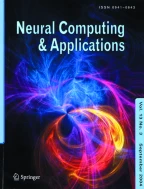392Accesses
5Citations
Abstract
This paper firstly established the finite element model of steel shell motor, computed modal frequencies on top 6 orders to compare with experimental results and verified the reliability of the finite element model. Then, this paper numerically calculated the electromagnetic force of the motor, inputted it into the verified finite element model and computed the vibration acceleration, velocity, stress and strain of the motor. Constraint and properties of internal materials remained unchanged. Steel shell was replaced by aluminum alloy shell to recompute the vibration acceleration, velocity, stress and strain of the motor and compare with those of steel structure motor. Results showed that the motor of aluminum alloy shell had more obvious vibration characteristics. Finally, this paper put forward neural network model optimized by GA. This model was used to predict the vibration characteristics of the motor of aluminum alloy shell and compare with the real value calculated by finite element, showing good consistency. It indicated that it was feasible to predict the vibration characteristics of the motor based on GA-BPNN model.
This is a preview of subscription content,log in via an institution to check access.
Access this article
Subscribe and save
- Get 10 units per month
- Download Article/Chapter or eBook
- 1 Unit = 1 Article or 1 Chapter
- Cancel anytime
Buy Now
Price includes VAT (Japan)
Instant access to the full article PDF.
















Similar content being viewed by others
Explore related subjects
Discover the latest articles, news and stories from top researchers in related subjects.Change history
16 May 2024
This article has been retracted. Please see the Retraction Notice for more detail:https://doi.org/10.1007/s00521-024-09980-9
References
Sun T, Kim JM, Lee GH et al (2011) Effect of pole and slot combination on noise and vibration in permanent magnet synchronous motor. IEEE Trans Magn 47(5):1038–1041
Shin PS, Cheung HJ (2011) A magnetostrictive force and vibration mode analysis of 3 kW BLDC motor by a magneto-mechanical coupling formulation. J Electr Eng Technol 6(1):76–80
Pollock RD, Woledge RC, Martin FC et al (2012) Effects of whole body vibration on motor unit recruitment and threshold. J Appl Physiol 112(3):388–395
McBride JM, Nuzzo JL, Dayne AM et al (2010) Effect of an acute bout of whole body vibration exercise on muscle force output and motor neuron excitability. J Strength Cond Res 24(1):184–189
Qiu JJ (2002) Investigation on coupled mechanical and electrical vibration and coupled magnetical and solid vibration of electrical machine. Proc Chin Soc Electr Eng 5(5):109–115
Qiu JJ (1981) Study of stability of motion shock absorption and parameters vibration of rotor of steam turbine generator excited by electromagnetic forces. J Tianjin Univ 4:83–96
Wu HM, Jia QF (2011) Research on nonlinear vibration of the motor rigid body model. J Dyn Control 9(3):222–226
Ma CG, Zuo SG, Tan QW et al (2013) Nonlinear torsional vibration model of a PMSM for electric driven vehicle. J Vib Shock 32(12):131–134
Tomczuk B, Sobo M (2005) A field-network model of a linear oscillating motor and its dynamics characteristics. Magnetics 8:2362–2367
Lv Z, Chen G, Zhong C et al (2012) A framework for multi-dimensional webgis based interactive online virtual community. Adv Sci Lett 7(1):215–219
Lv Z, Halawani A, Feng S et al (2015) Touch-less interactive augmented reality game on vision-based wearable device. Pers Ubiquitous Comput 19(3–4):551–567
Guo Z, Wu J, Lu H et al (2011) A case study on a hybrid wind speed forecasting method using BP neural network. Knowl Based Syst 24(7):1048–1056
Ding S, Su C, Yu J (2011) An optimizing BP neural network algorithm based on genetic algorithm. Artif Intell Rev 36(2):153–162
Kourehli SS (2015) Damage quantification method using artificial neural network and static response with limited sensors. J Vibroeng 17(3):1317–1325
Qian K, Liang J, Gao Y (2015) The prediction of vibration and noise for the high-speed train based on neural network and boundary element method. J Vibroeng 17(8):4445–4457
Shuran L, Shujin L (2011) Applying BP neural network model to forecast peak velocity of blasting ground vibration. Proced Eng 26:257–263
Wei Wei, Yong Qi (2011) Information potential fields navigation in wireless Ad-Hoc sensor networks. Sensors 11(5):4794–4807
Chen Z, Li C, Sánchez RV (2015) Multi-layer neural network with deep belief network for gearbox fault diagnosis. J Vibroeng 17(5):2379–2392
Hui KH, Ooi CS, Lim MH et al (2016) A hybrid artificial neural network with Dempster-Shafer theory for automated bearing fault diagnosis. J Vibroeng 18(7):4409–4418
Ke L, Wenyan G, Xiaoliu S et al (2012) Research on the forecast model of electricity power industry loan based on GA-BP neural network. Energy Proced 14:1918–1924
Wang Y, Wang S, Zhang N (2013) A novel wind speed forecasting method based on ensemble empirical mode decomposition and GA-BP neural network. In: Power and energy society general meeting (PES), 2013 IEEE. IEEE, pp 1–5
Xie S, Zhou H, Zhao J et al (2013) Energy-absorption forecast of thin-walled structure by GA-BP hybrid algorithm. J Cent South Univ 20(4):1122–1128
Author information
Authors and Affiliations
Department of Mechanical and Electrical Engineering, Henan Institute of Technology, Xinxiang, China
Xin-ya Chen
Department of Electronic and Communication Engineering, Henan Institute of Technology, Xinxiang, China
Zhen Chen
Department of Mechanical and Electrical Engineering, Guangdong University of Science and Technology, Dongguan, China
Yang Zhao
- Xin-ya Chen
You can also search for this author inPubMed Google Scholar
- Zhen Chen
You can also search for this author inPubMed Google Scholar
- Yang Zhao
You can also search for this author inPubMed Google Scholar
Corresponding author
Correspondence toZhen Chen.
Ethics declarations
Conflict of interest
The authors declare that they have no conflict of interest.
About this article
Cite this article
Chen, Xy., Chen, Z. & Zhao, Y. RETRACTED ARTICLE: Numerical research on virtual reality of vibration characteristics of the motor based on GA-BPNN model.Neural Comput & Applic29, 1343–1355 (2018). https://doi.org/10.1007/s00521-017-2923-x
Received:
Accepted:
Published:
Issue Date:
Share this article
Anyone you share the following link with will be able to read this content:
Sorry, a shareable link is not currently available for this article.
Provided by the Springer Nature SharedIt content-sharing initiative



